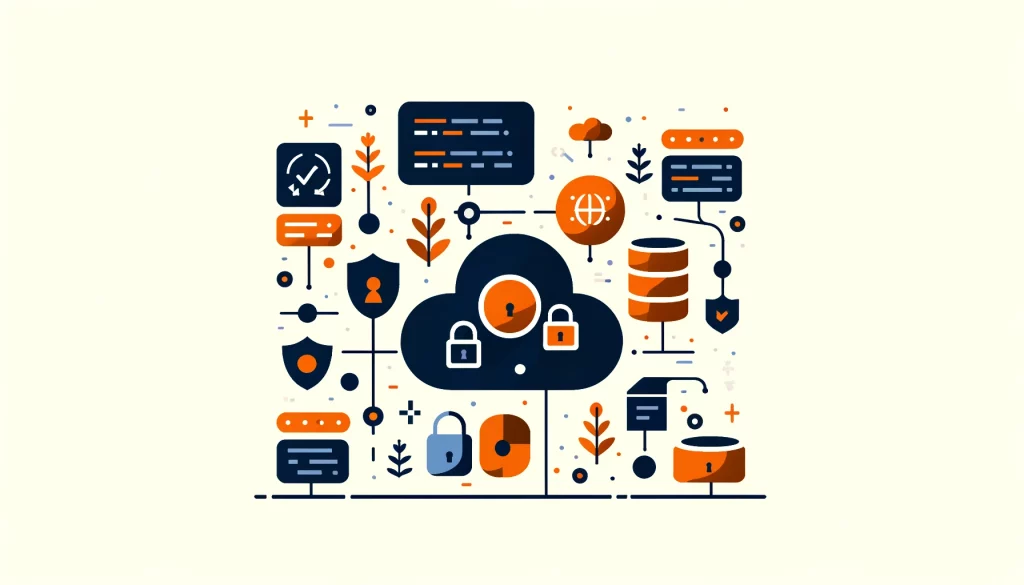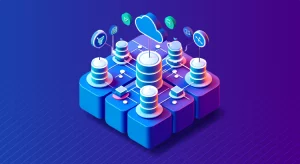
PostgreSQL Security

PostgreSQL, often referred to as Postgres, is a powerful open-source relational database system. It offers advanced features and enterprise-grade capabilities. It serves as a primary database for web applications, mobile apps, and data analytics systems. To ensure the safety of your data, PostgreSQL security is of utmost importance.
PostgreSQL Security Pillars
Postgres security stands on three essential pillars:
- Network-level security
- Transport-level security
- Database-level security
Security at the network level encompasses Unix Domain sockets, TCP/IP sockets, and firewalls. Transport level security ensures secure communication with the database through SSL/TLS. Database level security includes aspects like roles, permissions, row-level security (RLS), and auditing.
Understanding Network-Level Security in PostgreSQL
Network-level security in PostgreSQL focuses on three main components:
- Unix Domain Socket (UDS)
- TCP/IP Socket
- Firewall
Unix Domain Socket (UDS)
UDS is the default feature that connects your PostgreSQL database with other processes in a Unix-based environment. The filesystem shows a special file that users can access only from the machine where they have installed it. The PostgreSQL server’s operating system user owns the socket.
Inherently, a UDS possesses identical access controls to other filesystem files, necessitating only write permissions. The unix_socket_group and unix_socket_permissions configuration options can be utilized to administer a UDS. Altering access controls on the directory that houses the socket also changes its permissions.
PostgreSQL provides the capability to generate multiple sockets through the unix_socket_directories option. You can choose different folders and set different permissions for each one for various apps or user groups.
TCP/IP Socket
A TCP/IP network socket is a connection point that lets other systems connect to the PostgreSQL server over a network. This is crucial for apps that have numerous services or levels. It enables various sections of the app to communicate with the database server.
Additionally, the TCP/IP network socket is crucial for remote administration of the PostgreSQL server using tools like pgAdmin. This feature allows admins to control the database server from afar, simplifying the monitoring and upkeep of the system. The TCP/IP network socket is crucial for accessing and managing the PostgreSQL server from a remote location. It is essential for modern database management.
Firewall
Security experts strongly advise installing a firewall on the host system of a PostgreSQL database. Most operating systems have built-in firewalls, such as Windows Defender Firewall on Windows or iptables on Linux. You also have the option to set up firewalls from third-party providers for improved security and features.
A firewall allows you to define rules for inbound and outbound traffic. You can set rules based on different factors. These factors include the port number, which is usually 5432 in PostgreSQL. Another factor is the type of protocol, such as IPv6 or TCP.
Additionally, rules can depend on the data source, which may consist of a list of subnets or addresses. For the safeguarding of your database, rigorously regulate outside access to the server.
Implementing Transport-Level Security (TLS) in PostgreSQL
TLS is a secure protocol that enables encrypted communications over the public Internet. Postgres inherently facilitates TLS, ensuring encryption for database links and data transmission. You can utilize TLS for secure client verification when connecting to your database.
To activate TLS for PostgreSQL links, you need a server key and certificate. Safeguard the key and certificate using a passphrase. You can enter the passphrase manually or automatically using a script when the server starts.
Avoid using ciphers that are no longer considered secure. Review and properly configure the following parameters in the postgresql.conf file related to SSL encryption:
- ssl_ecdh_curve
- ssl_ciphers
- ssl_min_protocol_version
- ssl_dh_params_file
Refer to the PostgreSQL documentation for more information on these parameters.
Securing PostgreSQL at the Database Level
You can implement several data-level security measures to secure your PostgreSQL database.
- Roles and Permissions
- Row Level Security (RLS)
- Auditing
Roles and Permissions
PostgreSQL has a built-in user permissions system based on roles. Newer versions of PostgreSQL (beginning with 8.1) identify a “role” as a “user”. A database account name is like a role with a LOGIN attribute, allowing it to connect to the database.
Users can assign additional attributes to roles in a system to give them specific privileges and capabilities. These attributes allow roles to perform certain actions and tasks within the system. A superuser can ignore permission checks and have complete access and control over everything in the system.
This means they have the highest level of access and authority within the system. They are able to perform any action without restrictions or limitations. Users must carefully manage and monitor this level of access, as it comes with great responsibility. Typically, administrators or individuals with elevated privileges reserve this attribute.
Similarly, a role with the attribute CREATEDB is able to create new databases within the system. This allows them to set up and manage databases for various applications or projects. Database administrators or developers commonly associate this quality with creating and overseeing databases for work.
Another role attribute is CREATEROLE, allowing the role to create other roles in the system. This helps with giving out tasks and duties, letting some roles control and give permissions to other roles when necessary. Senior managers or team leaders often control user access and permissions in the system.
Assigning attributes to roles helps control access and privileges in a system. This ensures that users have the necessary permissions to perform their job effectively. Assigning the correct attributes to roles is important for organizations.
This helps improve security and make operations more efficient. It also ensures that users have the necessary tools and permissions to perform their tasks effectively.
Row Level Security
RLS allows you to specify policies that restrict the visibility of certain rows in a table to specific roles. To use row-level security, you must first turn on this feature for the table. Then, create a policy that decides which users can access which rows.
Establishing RLS policies can present intricacies that you must consider during your index design process. Use RLS to control access to secure data such as PHI. Employees should only access personal data in a way that follows ethical and professional rules. This is important to ensure data security and compliance with regulations.
Auditing
Keeping an audit trail guarantees that you possess precise and comprehensive records. By activating the verbose logging function, you can oversee different elements of Postgres, including the server itself.
To improve how you check and track your PostgreSQL work, you can add extra tools like pgAudit from other companies. This tool helps you keep track of all SQL commands used on your database. It provides valuable information about user actions and security risks.
If you host your own PostgreSQL work, you must install pgAudit manually to use its features. To do this, you must first download the extension. Next, set it up to work with your database. Finally, configure the logging parameters.
Once installed, pgAudit can help you meet compliance requirements, identify performance issues, and improve overall database security.
You can use tools like pgAudit to understand how your database is used. This can help you protect your data and improve performance.
PostgreSQL Security Best Practices
Here are some best practices to enhance PostgreSQL security:
Use One-Way Encryption for Values That Don’t Need Decryption
Some encryption techniques, like AES, allow decryption, while others, like hash-based techniques such as MD5, provide one-way encryption. Use the most appropriate encryption for each data type. For example, use two-way encryption for data needed for assessment and one-way encryption for user passwords.
Physically Separate Sensitive Datasets
Having security measures in place is important when working with datasets that need to be kept separate. This prevents accessing data from two tables at the same time during one login session. You can achieve this by using pg_hba (PostgreSQL host-based authentication) and Role-Based Access Control (RBAC) mechanisms.
You can use pg_hba to decide who can access the database and how they can log in. This can help restrict access to specific tables or databases based on the user’s credentials. RBAC, on the other hand, allows you to define roles with specific privileges and assign these roles to users. This can help enforce access control policies and prevent unauthorized access to sensitive data.
Implementing security measures can create problems with SQL joins. This is because the data in two tables will separate. As a result, users cannot access them together in one query.
Considering the consequences before using this method is important. You should only use this method in situations where strict data isolation is necessary. This will help safeguard sensitive information.
Prevent External Connections to the Database
Configure listen_addresses to localhost or the specific host machine running the application that uses the database. This setting ensures that only the PostgreSQL host or a known host can connect to the operating system. This reduces the risk of unauthorized access to your database and data structures.
One way to enhance the security of your database is to disable remote access through the pg_hba.conf file. By restricting access to only local connections, you can prevent unauthorized users from accessing your database remotely.
To access your operations remotely, it is safer to use SSH to connect to the database host machine. After connecting, you can then make a local connection. This makes the connection more secure by encrypting it and only allowing authorized users to access the database.
Additionally, you can use SSH to set up tunnel access to your PostgreSQL database. This involves creating a secure connection between your local machine and the database server through an SSH tunnel. This method allows you to securely access your database without exposing it to potential security threats from external sources.
To keep your database safe and protect important information, follow these steps to lower the risk of unauthorized access. By following these steps, you can lower the chance of unauthorized access to your database. This will keep your important information safe from potential breaches.
Avoid Revealing Sensitive Information in Database Logs
Use standard practices to administer your database and prevent revealing sensitive information in database logs. Avoid using the PSQL create user command to make database users. This command shows passwords in plain text in logs.
Instead, think about employing a safer approach for generating database users. Preferably, use the createuser command from the operating system, which displays passwords in an encrypted form.
Staying Updated with Critical Security Updates and Patches
Regularly checking for updates and patches is essential for maintaining the security and integrity of your PostgreSQL database. Following this practice is important to meet standards such as PCI DSS and other regulations.
Keep your database safe by regularly updating security patches and staying current with the latest security updates. Check the PostgreSQL security page regularly for updates and patches to address security issues and vulnerabilities.
Not updating your PostgreSQL database regularly can make it easy for hackers to attack and steal your sensitive information. Make sure to regularly check for updates and patches to keep your database secure and up to industry standards.
Conclusion
PostgreSQL security is crucial for protecting your data and maintaining the integrity of your database. To reduce the risk of unauthorized access and data breaches, add security measures to your network, transport, and database. Make sure to implement security measures in your network to prevent unauthorized access.
Also, ensure that security measures are in place for data transport to protect against breaches. Lastly, secure your database with appropriate security measures to safeguard sensitive information.
To stay safe, make sure to use encryption. Keep sensitive data separate from other information. Avoid connecting to outside sources that may compromise your security.
Do not put sensitive information in logs. To stay protected, regularly update your security measures.
By prioritizing PostgreSQL security and continuously monitoring and improving your security posture, you can ensure the confidentiality, integrity, and availability of your data.
